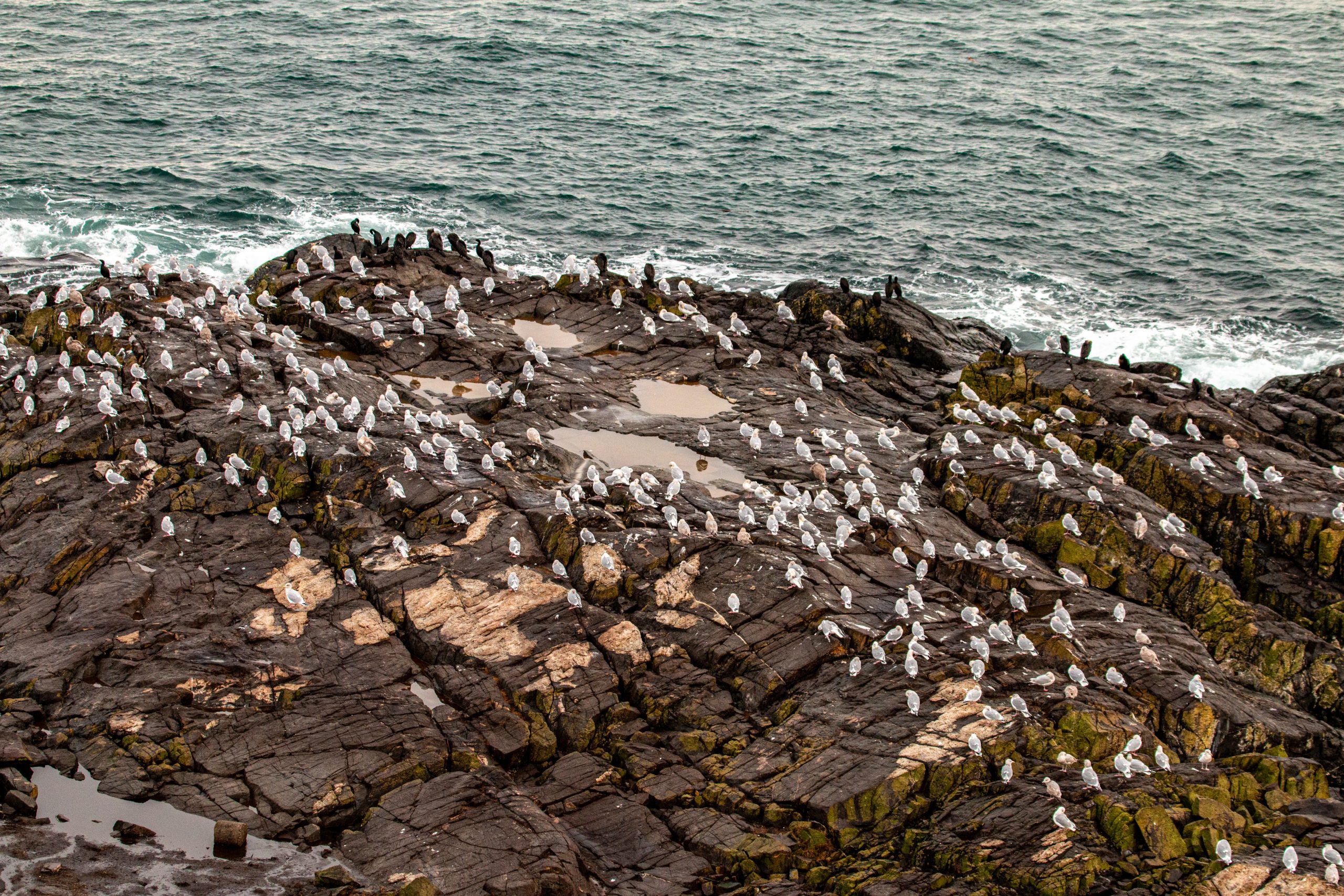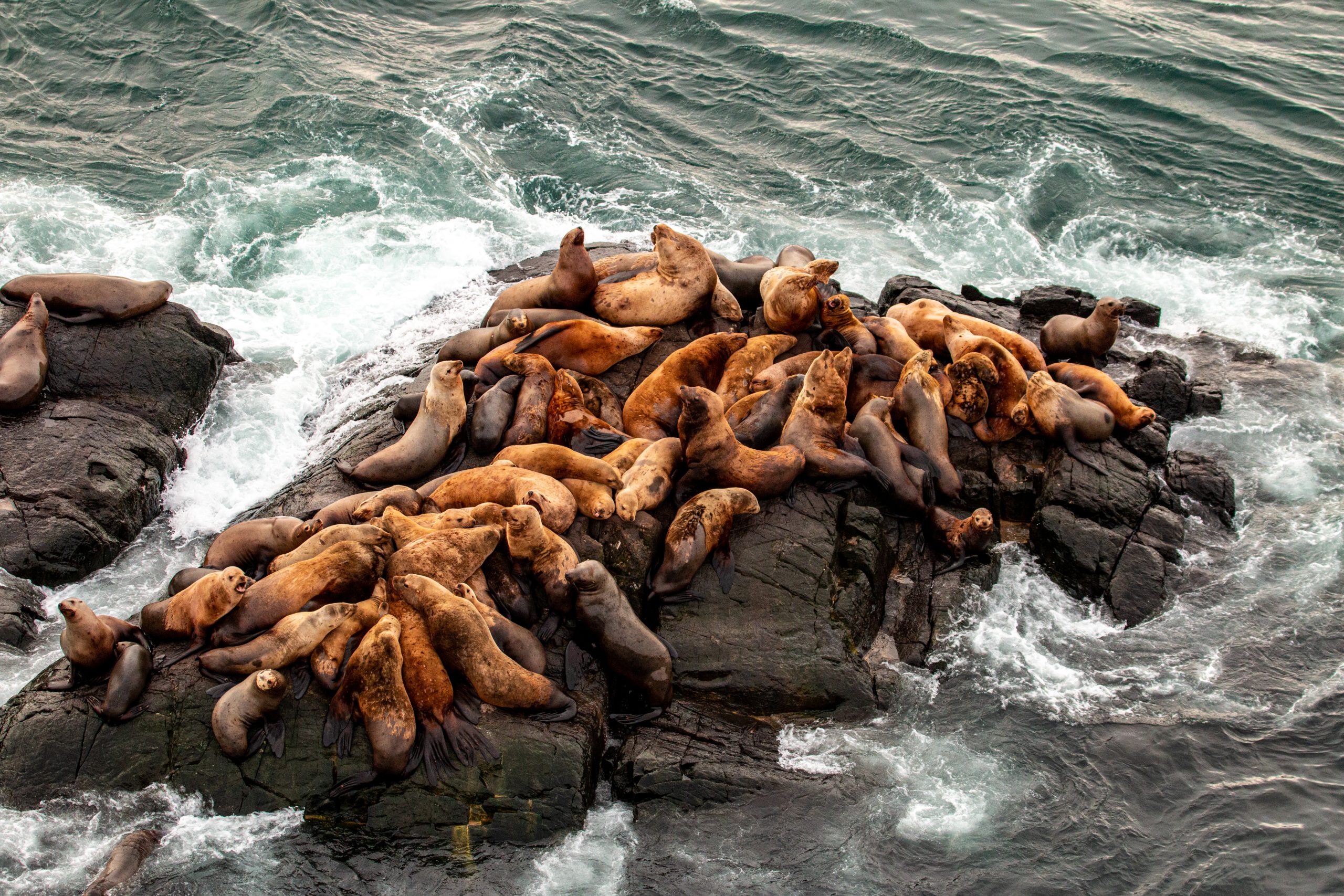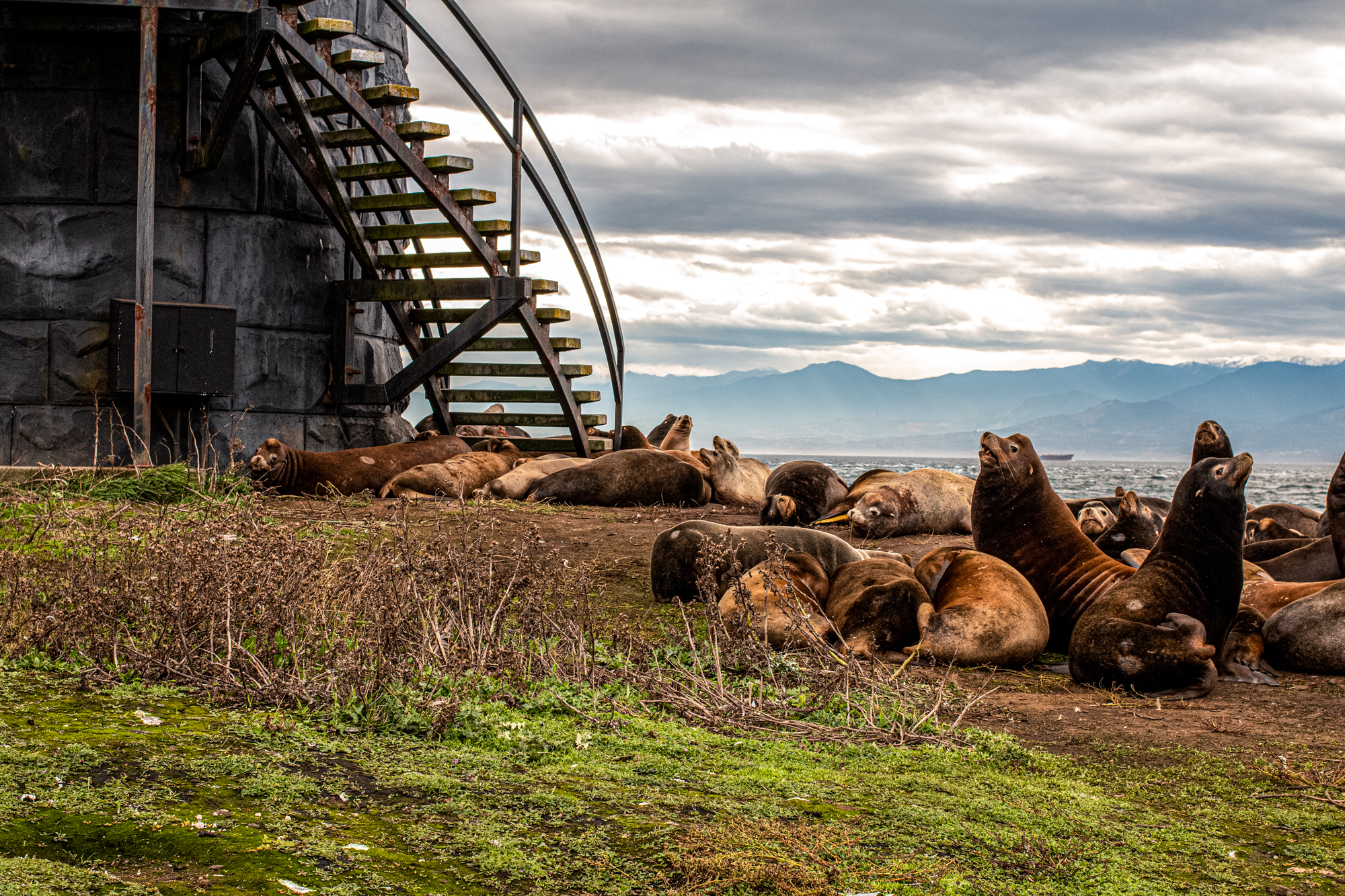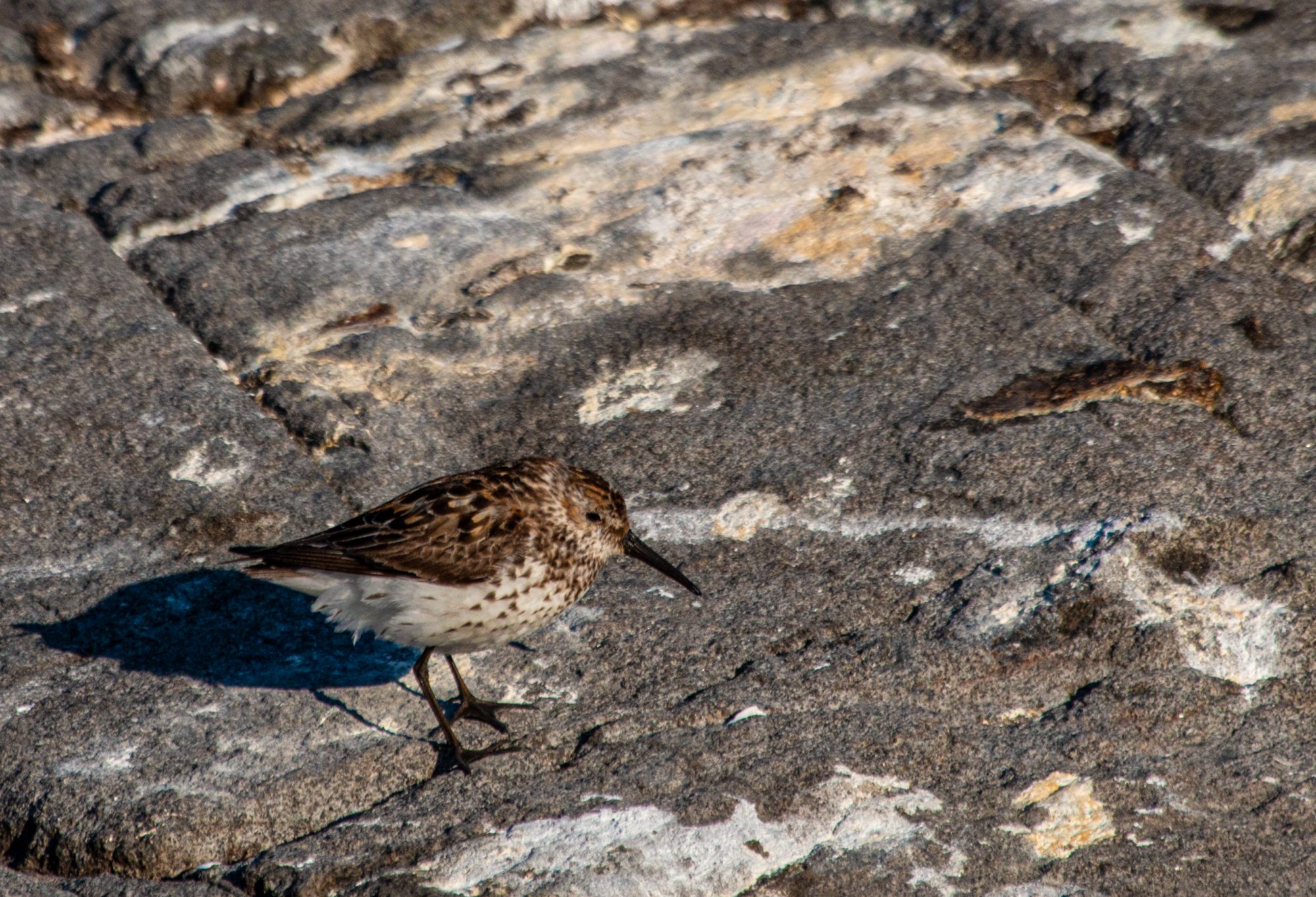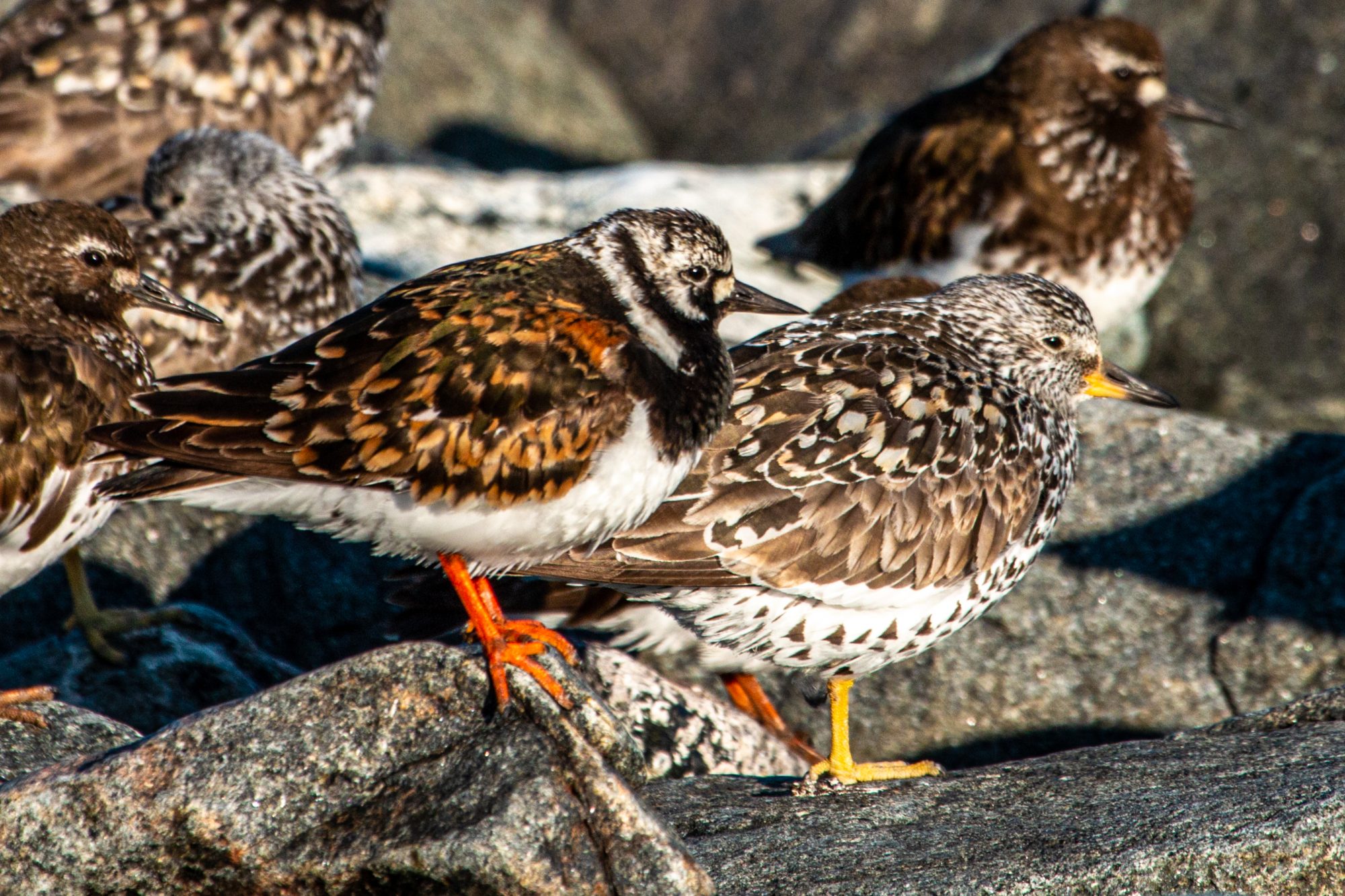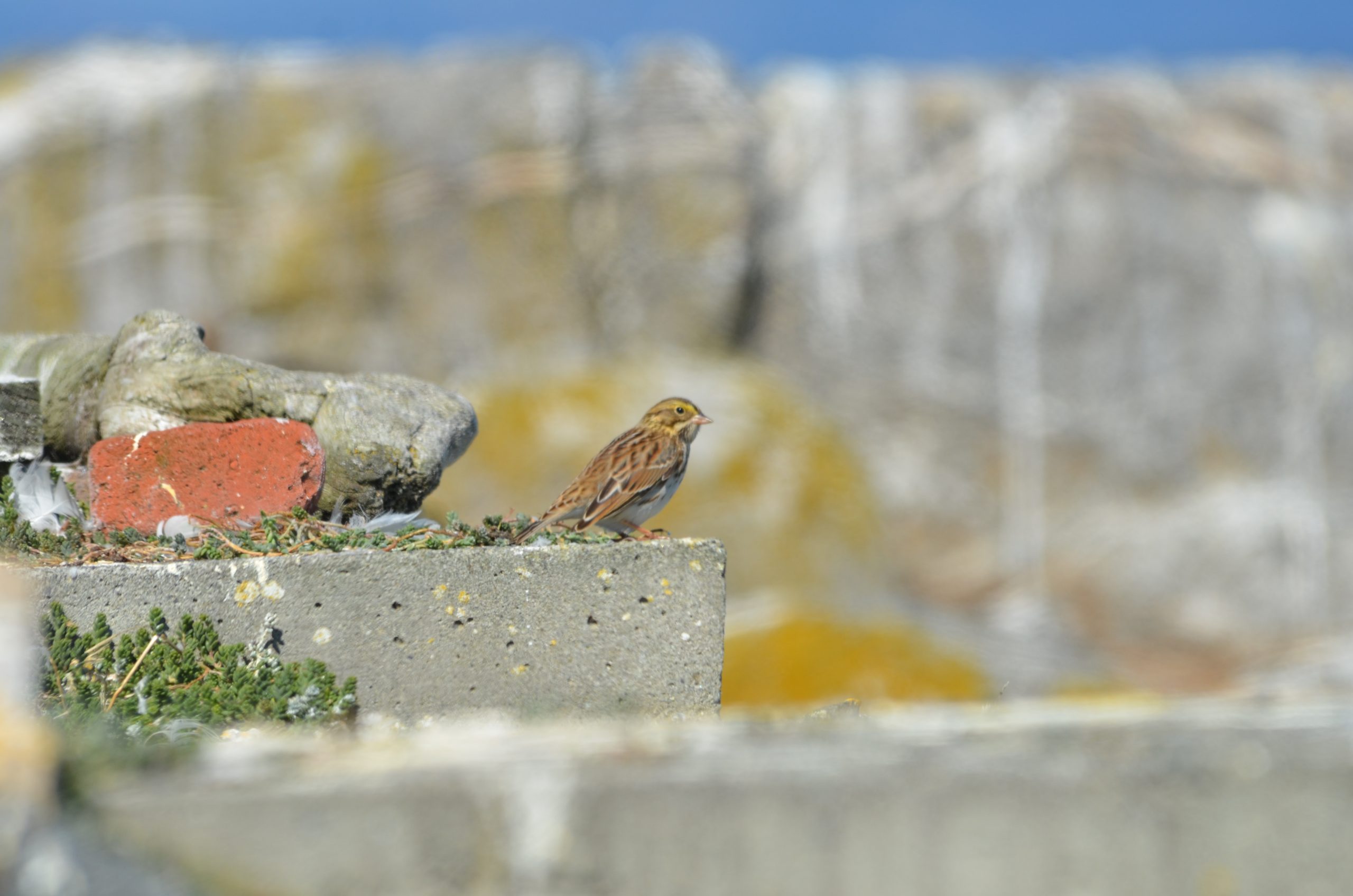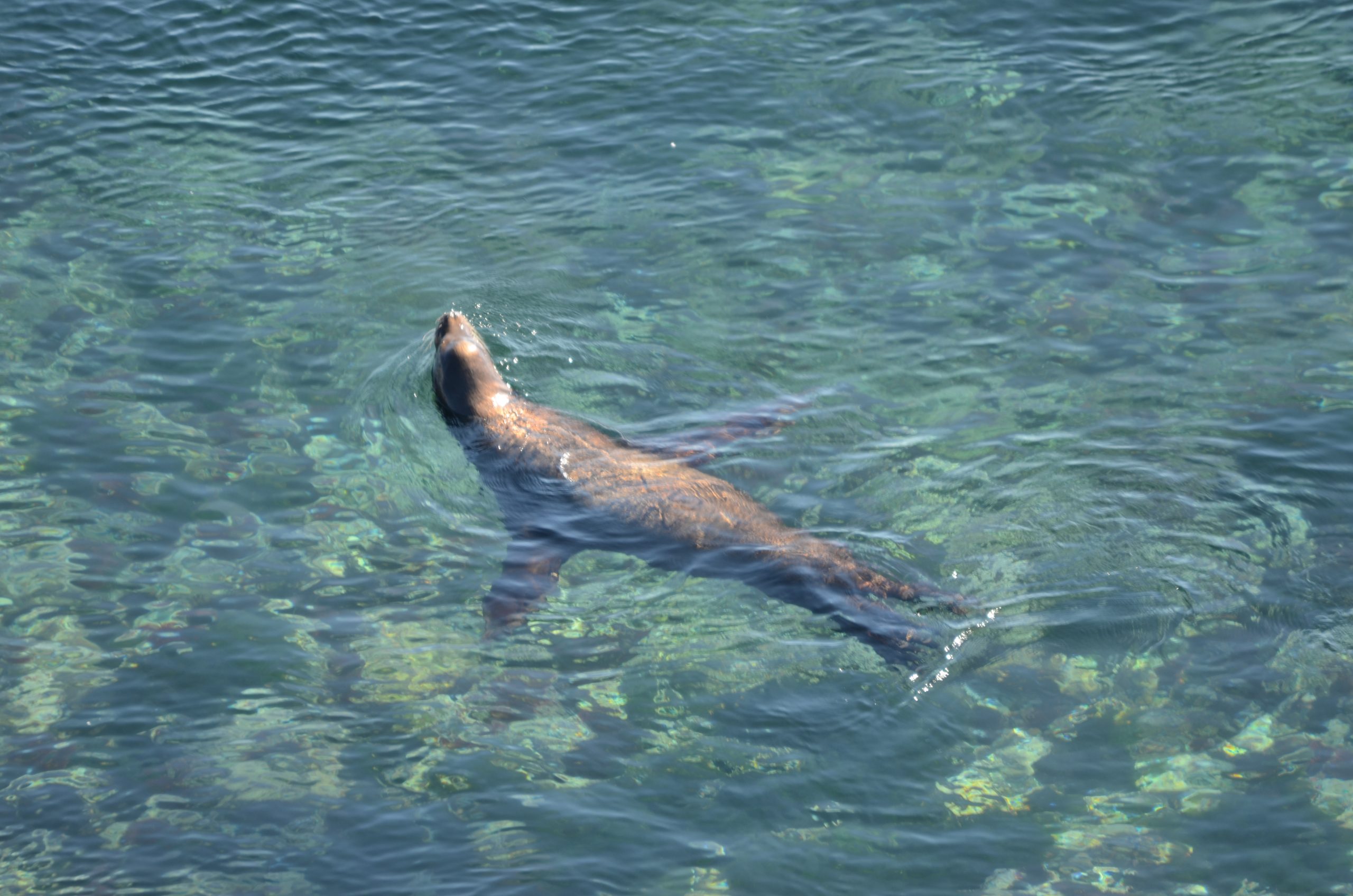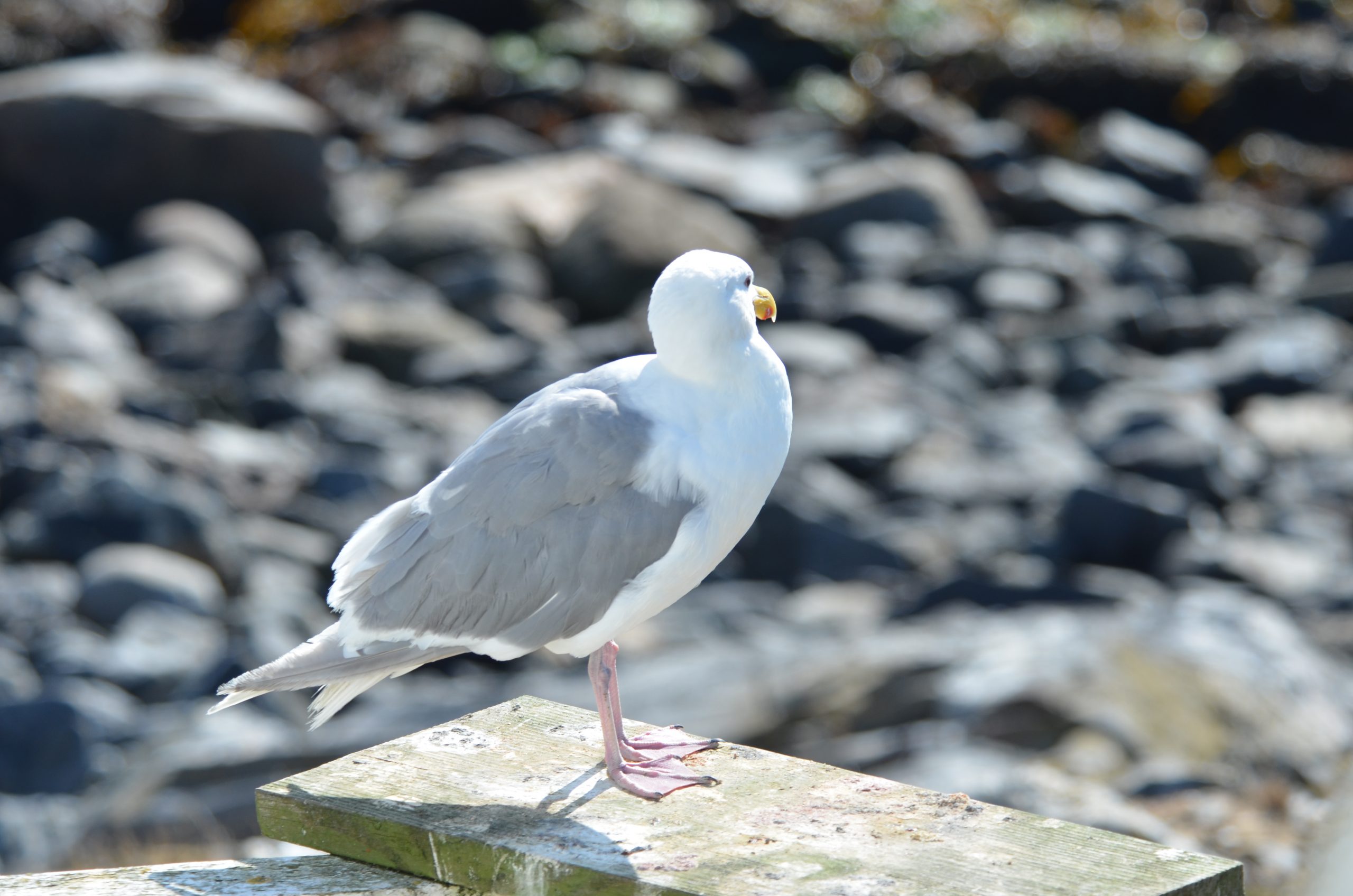
Snowy Race Rocks from the lighthouse.
Weather:
Well we got the same dump of snow on February 13th that hit Victoria, arriving with some 40-50 knot outflow winds blowing the crunchy snow all over the place. Estimated about 10cm of snow, but due to the high winds it was moving around lots.
Visitors/Traffic:
No visitors in the last week besides the future Eco-Guardians coming out to do some training. The weather has been consistently >30 knots from Febryary 10th onwards.
Ecological Notes:
With the heavy winds and snowfall the California Sea Lion numbers have been reduced, we thought just for a night or two but the numbers haven’t returned as the snow melts and winds die down. We had 1 California on the jetty looking very sick and emaciated; and one on the South side of the lighthouse with a neckband bleeding pretty heavily.
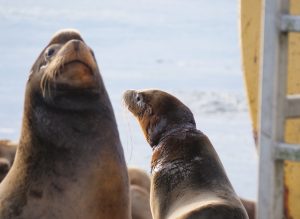
California Sea Lion with a nasty looking neck-band.
The Stellers have come back once the snowfall stopped, but weren’t around during the peak snowfall days.
On February 13th we spotted 4 Southern Resident Orca’s cruising their way around the South side of the lighthouse. Talking with local experts it sounds like it was members of J-pod due to local hydrophone recordings.
Elephant Seal update:
On February 11th another pup was weaned and his mom left. This is our 4th pup to be weaned this season, with one still nursing.

Snuggles got buried into his own little snow bank.

Our last female on the island, Jolene provided a wall to protect her pup from the blasting snowflakes.
Our oldest pup Cheermeister got bit on the head the night of February 7th, and retreated to the front door of the Eco-Guardian house. We thought his bite marks didn’t look that bad despite the amount of blood, but the wound never seemed to clot and may have been much deeper than it initially looked. Cheermeister died the morning of February 11th, and further inspection showed he had 2 deep bites from one of the adult male elephant seals; we assume Jafar the non-Beachmaster hanging out on the island.
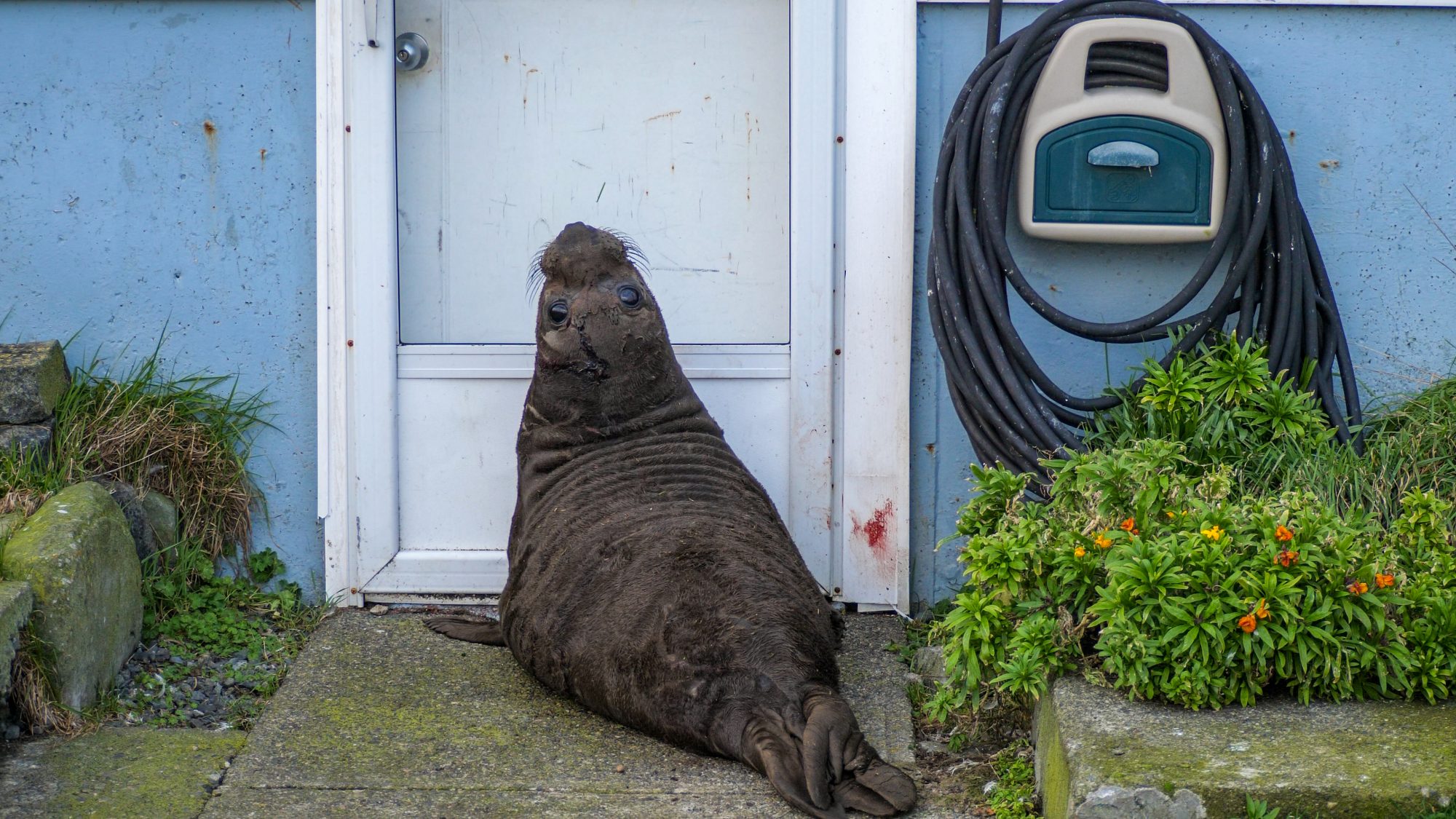
Cheermeister post head wound.

The head wound turned out to be fatal. Pretty crazy to see how much damage they can handle, but the wrong bite in the wrong spot can be enough to kill them.
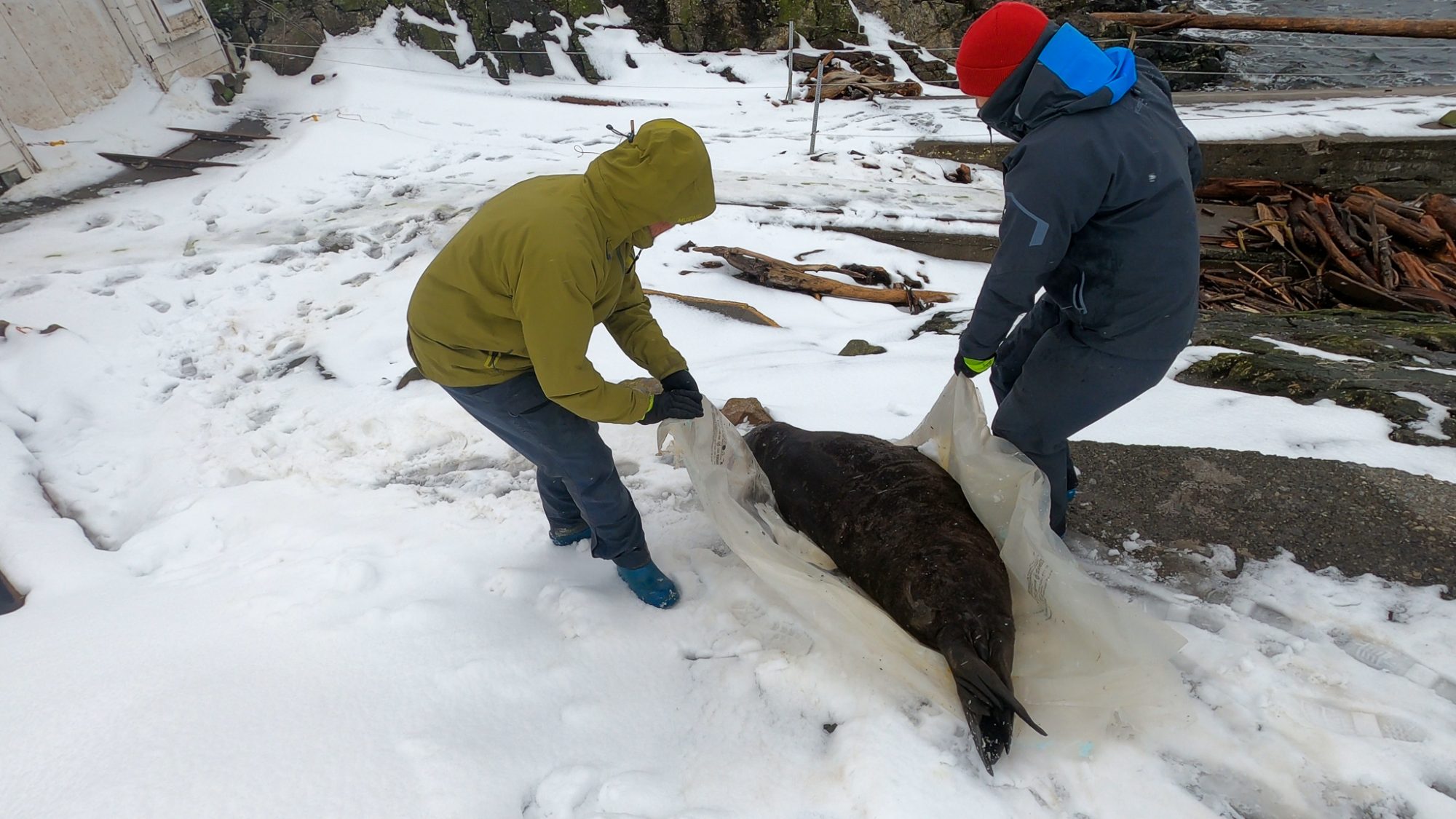
The photos of the seals make them look all cute and cuddly, but they’re actually all over 150kg (330lbs). If it weren’t for the slippery snow he would have been much harder to move.
It’s an interesting thing getting to live in such close proximity to wild animals. You don’t want to interfere in their lives, and sometimes that means watching things that make your stomach churn. Other times things happen and you don’t really know why, and are just left wondering. We are very grateful for our time on Race Rocks, getting to watch these pups be born, grow, and explore the island. Each birth is a celebration of the resiliency of these animals, making their comeback from near extinction.

I love seeing these fat pups slipping around in the snow!
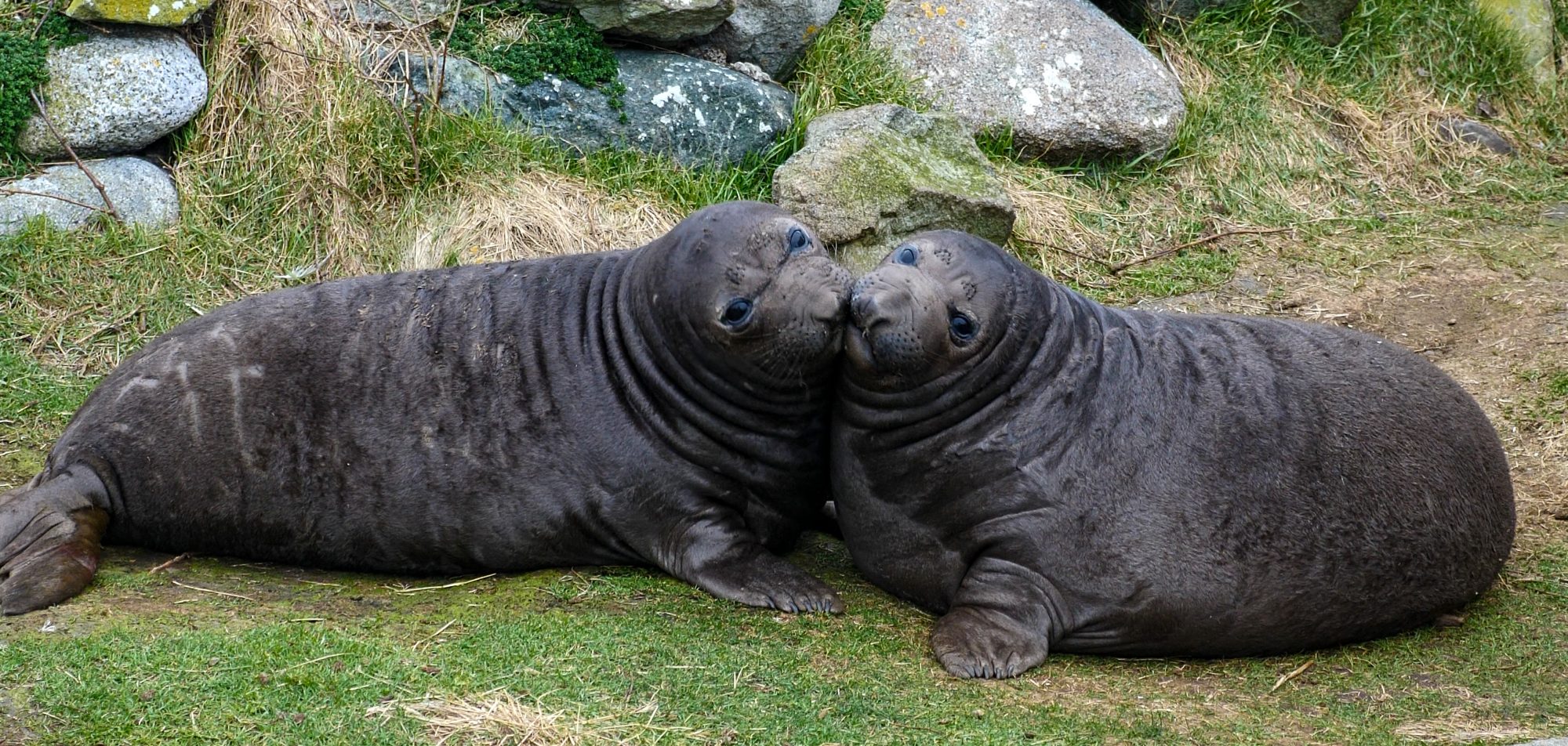
Jellybean and Sebastian have officially ‘podded up’ and are exploring the island together. Too much cuteness.

To offset the sadness of Cheery’s death, here’s a Elephant Seal pup’s tail. They’re possibly the most adorable part of the seal.

February Sunsets lighting up the sky!






